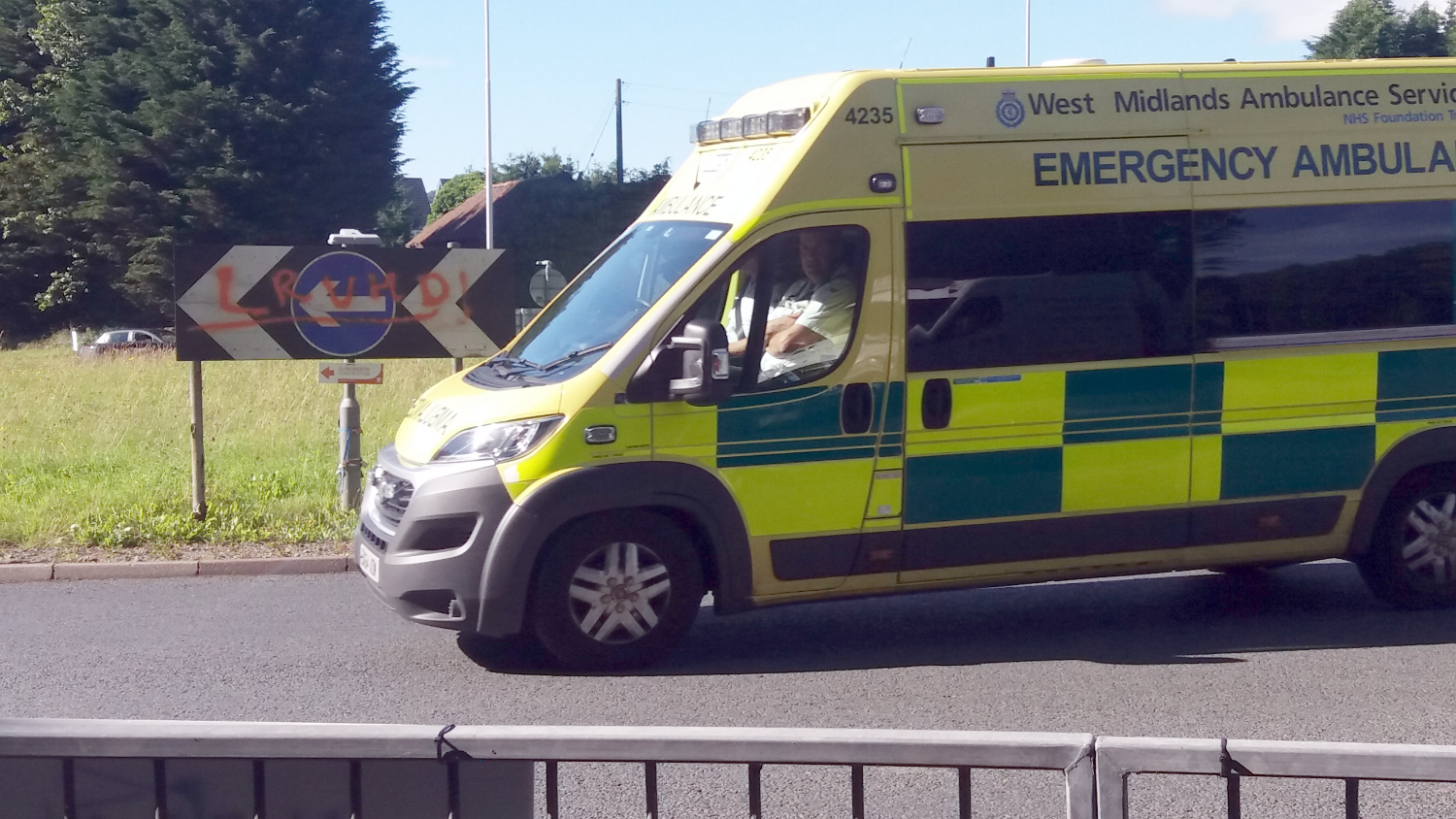We have been concerned about the time people in Ludlow have to wait for an ambulance for a long while. Data from the winter just ended show that the wait for an emergency ambulance here is still lengthy and target response times are far from being met.
If someone has a life threatening condition such as heart attack or respiratory failure, nine of ten can expect to wait up to 39 minutes for an ambulance. The national response target is 15 minutes. For a stroke or chest pains, the wait is up to two and a half hours against a target of 40 minutes. For an urgent problem, such as a fall, fracture or dislocation that requires transport to hospital, the wait time can be up to 11 hours for nine in ten patients. The target is two hours.
These figures are shocking but unsurprising. There have been a number of well publicised cases of ambulance delays leading to a hectic drive to hospital and of giving birth before the ambulance arrives. Unfortunately, I have recently learnt of new distressing cases.
Nearly 120 ambulances on emergency calls arrived in the Ludlow area every month over the winter. Almost all ambulances took patients to A&E (95%). In three-quarters of these, patients were taken to Hereford County Hospital (75%), with nearly a quarter to the Royal Shrewsbury Hospital (23%). Just eight of the 701 ambulances over the six months took patients to the Princes Royal Hospital in Telford, three went to Worcester Royal, two to the New Queen Elizabeth Hospital in Birmingham and one to the Alexandra Hospital in Redditch.
There are two obvious peaks in response times for Category 3 calls, October and December 2022. Wait times for transfers from ambulances to A&E grew steadily throughout late 2022. There were strikes by ambulance staff in December. Looking at the data, there is no single reason for these spikes. It an indication of a system stretched to breaking point and prone to collapse.
I have received many personal stories. An elderly woman fell and, despite pouring blood from her head, had to remain on the floor until the ambulance arrived more than two hours later.
I was phoned by another elderly lady who was in a great state of distress. Her husband had become very ill a few evenings before. She was told that there were no ambulances available and she should make her own way to A&E with her very sick husband.
She called a friend and they began an urgent dash to Hereford County Hospital. Her husband’s condition deteriorated as they drove along the A49. She contacted 999 again and was told to wait in a layby until an ambulance became available.
No time was given for the ambulance’s arrival. The driver put his foot down.
On arrival at Hereford County Hospital, paramedics were waiting. They did what they could but her husband had died somewhere along the A49.
The trauma of this do-it-yourself journey has increased her grief. Her husband might not have survived in an ambulance but at least he would have been getting the best care possible. He would have had a chance of survival. And at the very least, he would have had a dignified death. Not a death in his wife’s arms the back of a car rushing down the A49.
In another case, friends went to check on a neighbour who had not arrived for lunch. She had fallen and was unconscious. Again, there was no ambulance available. She could not be moved without professional support. When it was established that there were no vital signs, the ambulance dispatcher said no ambulance would be sent.
Health services in this country have always been stretched but nothing like we are seeing today. Not everyone waiting for an ambulance would survive if it arrived within the target time. But at least they would have a better chance of survival. Or at the very least, a dignified death.
In rural Shropshire and Ludlow, the response times have got worse since the removal of local ambulance stations. These days ambulance crews barely get a let up on 12-hour shifts. They used to get a break at Ludlow Community Hospital or the ambulance station in Craven Arms but the hospital is no longer used and the Craven Arms station has been closed. That means ambulances must be dispatched from Hereford or Shrewsbury.
Notes
This article is based on a freedom of information to West Midlands Ambulance Service. It covers the SY8 area and the six months from September 2022 to February 2023.
“Ludlow” and “Ludlow area” in this article always means the SY8 postcode.
The 90th percentile, the value within which 90% of values fall, is commonly used to measure performance. It is a better performance measure than the mean. NHS England performance targets for ambulance trusts use the 90th percentile.
NHS England classifies calls for ambulances into four categories.





Thanks for the information, Andy. This is shocking and my heart goes out to the people who’ve had such horrible experiences. Can’t believe the lack of care and accountability, and surprised legal action isn’t being taken.
The drs are just as bad. I told one receptionist that I was very low, basically suicidal and i was crying and asking for help and she told me phone call appointments were for emergencies only and to try again the next day for an appointment it was only when I said I really need to speak to a Dr that she reluctantly said she would try get the dr to call later. I was mortified.